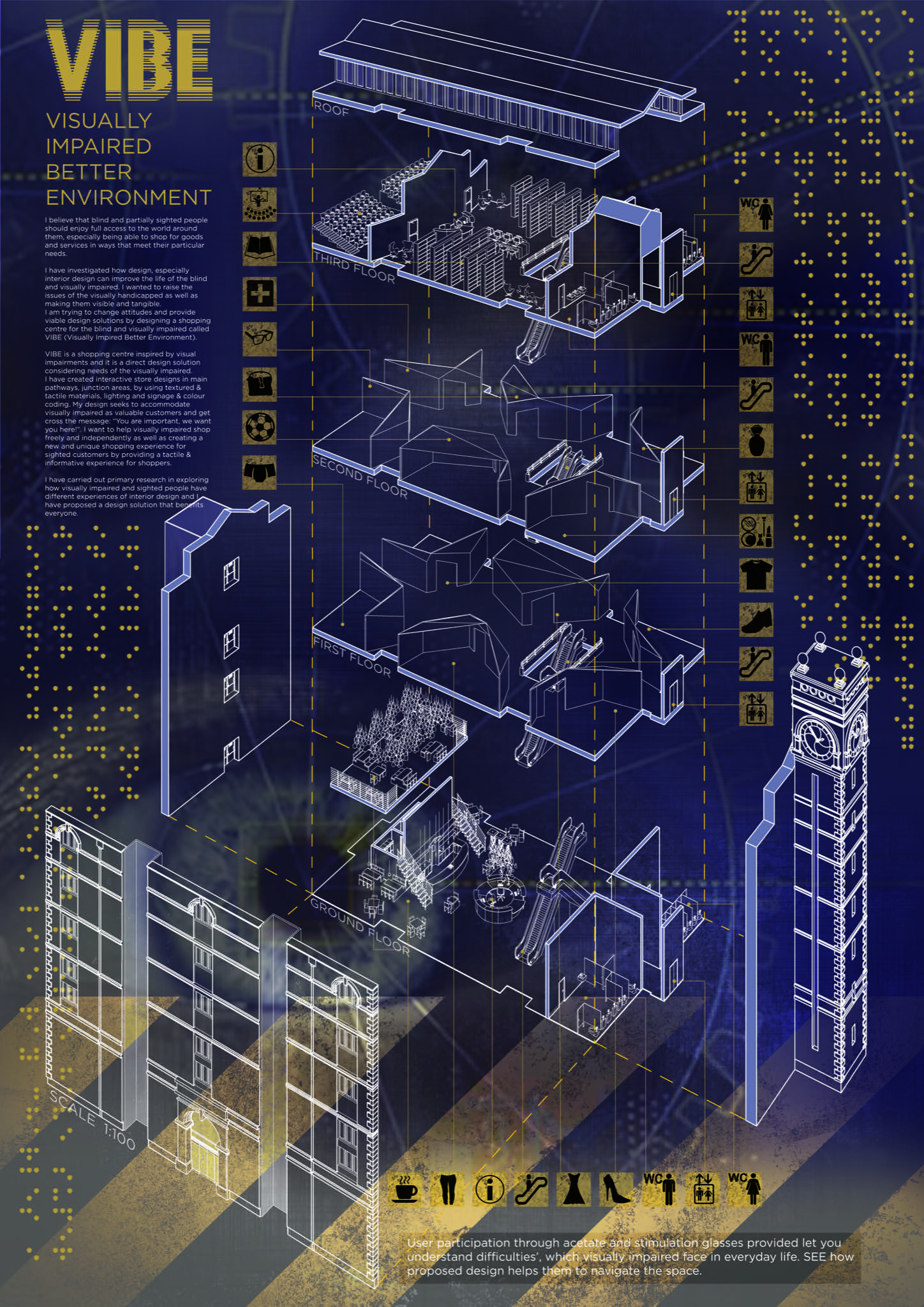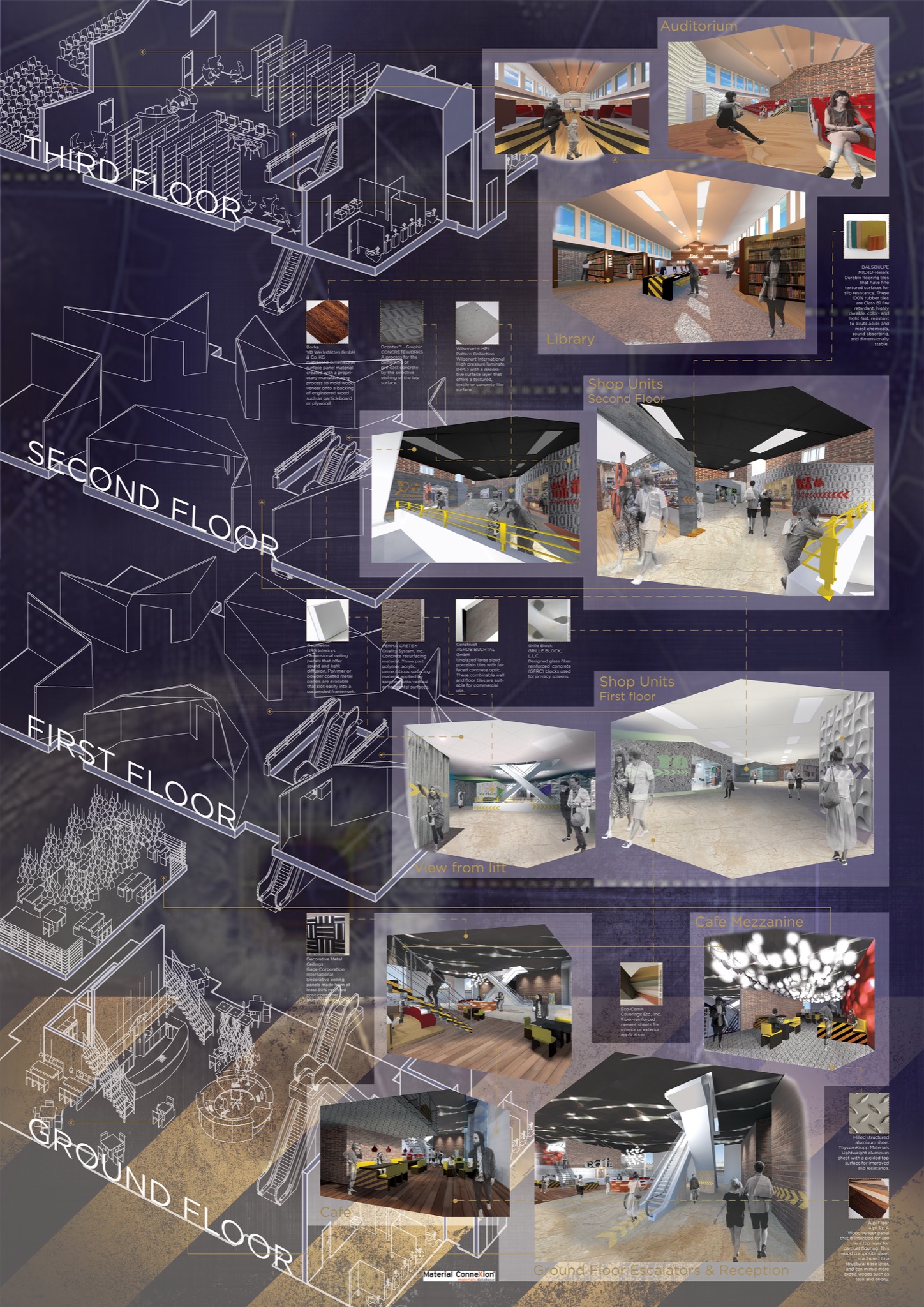

It is well known that a need to make buildings accessible to people with physical disabilities has been widely accepted in recent years, however when it comes to people with visual impairment, their needs are often forgotten or treated with bare building regulation minimum.
Visual disability can lead to problems in people’s lives, either directly or indirectly. These problems are either viewed as being inherent in an impartment itself or as being created by the designed environment and other people’s behaviour. I believe the way in which interior spaces are designed can make an enormous contribution to the quality of life for people with a visual handicap.
I have investigated how design, especially interior design can improve life of the blind and visually impaired. I have explored how visually impaired and sighted people have different experiences of interior design that suit them both so I had considered both perspectives and break unnecessary barriers and exclusion by designing solution that benefits everyone.
Within industry, interior design is increasingly valued for problem solving therefore I had to make some of the issues visible and tangible by facilitating discussion and decision-making. I had researched the role of interior design in challenging attitudes toward disability as well as tried to change attitudes and provide direct design solution of a shopping centre for the blind and visually impaired called VIBE (Visually Impaired Better Environment). I believe that blind and partially sighted people should enjoy full access to the world around them, especially being able to shop for goods and services in ways that meet their particular needs while making shopping an enjoyable experience as well as create a unique design solution that benefits everyone.
Also my project is directly link with my dissertation “Retail design considering needs of Visually Impaired”.

